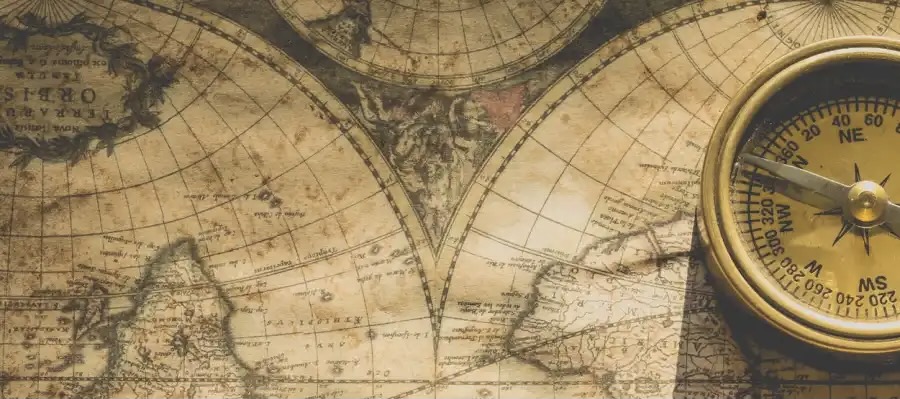The story of the Camino de Santiago or the Way of St. James, is a mixture of history and legend. Historically, we know St. James the Apostle spent time on the Iberian peninsula seeking converts to Christianity, then he returned to Jerusalem where he was beheaded in 44 AD. Legend has it his body, accompanied by two disciples and two angels, was transported by boat to Galicia for burial. Nearly 800 years later a shepherd named Pelayo found some bones in a field which were declared to be the relics of St. James. Hearing of the discovery, King Alfonso II commissioned a church in the area and later, in 1078, a cathedral was built to house the relics. The town of Santiago (St. James) de Compostela (burial ground) grew up around it. Pilgrims came from around the world to see the relics of St. James and continue to come to this day.
Today there are 2.5 million visitors to Santiago de Compostela each year and about a half million are pilgrims walking the Camino, the third most important Christian pilgrimage after Jerusalem and Rome. If you walk 100 km or bike or ride a horse 200 km to Santiago by the routes on the map below, you can receive the Compostela, a certificate of completion. For Catholics, completion of the Camino during a holy year which only occurs every 25 years or by special declaration, also carries with it a plenary indulgence. (A plenary indulgence essentially forgives sins and can shorten the time in Purgatory.) Pope Francis declared 2016 a holy year so it may be a while, however, before another occurs. And by the way, Santiago de Compostela and the Camino are UNESCO World Heritage sites.

Map of Camino de Santiago Routes provided by http://www.caminoadventures.com
Vigo, Spain, on the Galician coast was our final port of call on our Holland America cruise on the ms Rotterdam and we booked transportation to Santiago de Compostela for the day. Photos taken through the windows on the bus were on the whole, unsatisfactory, but I thought one photo with the explanation shared by the guide should be included. Throughout the countryside, we frequently saw what looked to me like raised miniature churches. They are called horreos, granaries that hold any kind of grain but especially corn in this area. The horreos are raised from the ground to keep the grain dry and often built of concrete to keep rats out.

Horreo seen from the bus
As our bus approached the city, we saw more and more pilgrims with their walking sticks reaching the end of their Camino. We parked a short distance away from the Old Town and our guide led us on foot. Approaching the Cathedral, the excitement was palpable as we followed a pilgrim through a passageway where a bagpiper played traditional Galician music.

Passageway into Praza do Obradoiro
Sadly, our first view of the Cathedral of Santiago de Compostela was almost completely obscured by scaffolding but I appreciate that repairs and restoration continue to protect the cathedral for future generations to enjoy.

Cathedral of Santiago de Compostela

Cathedral of Santiago de Compostela

Clocktower at Cathedral of Santiago de Compostela

Hostal dos Reis Católicos across from the cathedral
The scallop shell is the symbol that marks the Camino to guide pilgrims along the trail. Although there are several explanations of the symbolism, the one that resonates most with me is the grooves on the shell begin from different points but all lead to one central point just as the many Caminos all lead to the destination of Santiago de Compostela.

Scallop shell that marks the Camino
Inside the cathedral, the celebration of Mass was in progress but visitors were welcome, nevertheless.

Interior of the Cathedral

Interior of Cathedral

Censer for burning incense during mass

Statue of St. James that visitors touch, hug, or kiss as they pass behind it to see the crypt

Crypt of St. James
Back outside, we walked around to the north facade of the Cathedral, then wandered through the narrow medieval streets of the Old Town.

North facade of Cathedral

Old Town Santiago de Compostela

Old Town scene

Rick, Lori, Laura, and Jim trying the local fare in Old Town

Typical dish recommended by our waiter

Local produce

Iberian ham in a local shop
We bought just one item in the local shops–a cross of St. James rosary for our Catholic son who bears the middle name of James.

Cross of St. James or Santiago Cross
As we stood on the street in the Old Town, we were delighted by a surprise parade through the narrow cobblestone street.
At the appointed hour, we headed back to the Cathedral and our meeting place for the return bus trip to Vigo and our cruise ship.

Lori, Rick, Jim, and Jeff outside the south facade, the oldest of the Cathedral
I would love a return trip to Santiago de Compostela and the thought of a hiking adventure appeals to me. Our visit fired my imagination with visions of hiking the French Way, the original route marked in heavy red shown on the map above. Cheryl Strayed hiked 1100 miles of the Pacific Crest Trail. Bill Bryson hiked nearly 800 miles of the Appalachian Trail. l propose we walk just 100 km (62 miles) from Sarria to Santiago which will earn us our Compostela. Who wants to go with me?
Based on events from May 2016.
